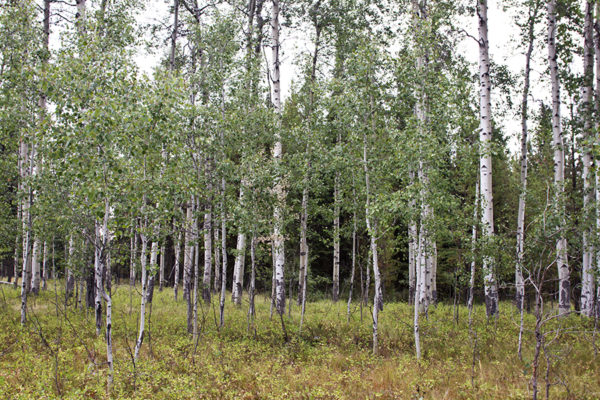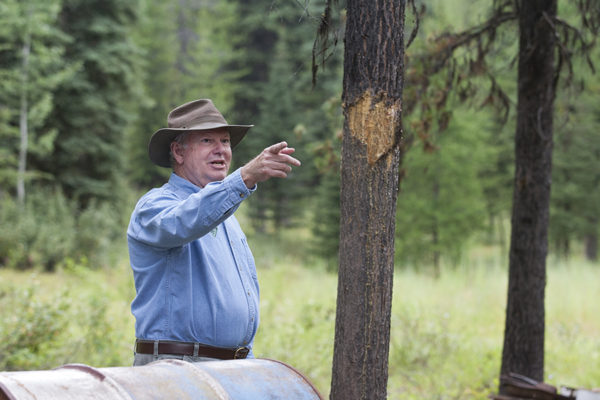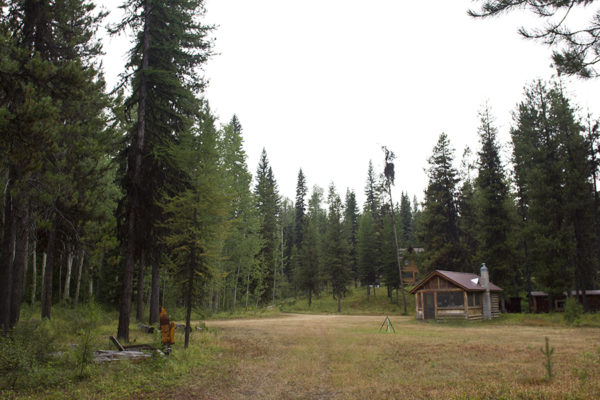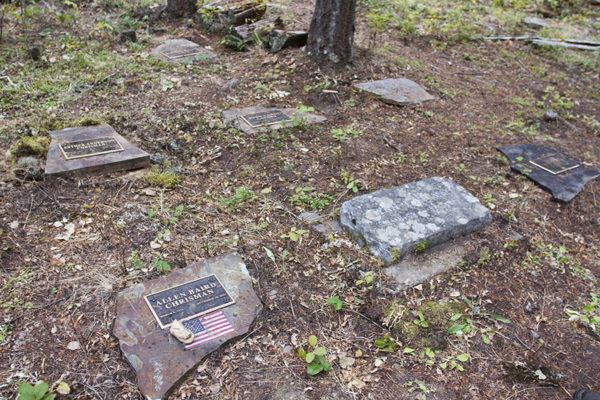NORTH FORK — To accompany siblings Allen Chrisman and Kari Wiley in the Chrisman Family Forest is less of a nature walk than it is a meander through the woods to meet old friends.
In one section, Allen discussed the family’s logging work to promote growth of certain conifers, while in other areas, he pointed out fuel-reduction projects that have provided new lines of sight from the cabins and other structures on the property.
“You can’t keep trees from growing here — we have wonderful regeneration,” Allen said. “There are opportunities to manage our forest for whatever you want.”
He pointed out a ponderosa pine, one of a thousand he planted in the late 1970s in a fit of pique after mountain pine beetles wiped out 90 percent of the lodgepole pines eight inches in diameter and larger on their property. That’s his tree, he said, before walking up to it for a closer look.
The family was able to hold a sale and get the logs to market early enough to actually earn money on them, but the change in the forest was a blow. It was also a reality check that this forest of their childhood wouldn’t stay the same forever.
“It was actually devastating for us,” Allen said.
“That was our forest,” Kari added.

About five miles from the Canadian border and across the North Fork Flathead River from Glacier National Park, the 301-acre property has been in their family since 1958, when their parents, Esther and Baird Chrisman, purchased it from the original homesteader, Bart Monahan.
“We grew up spending our summers here,” Allen said, sitting on the back porch of the property’s main cabin.
Windows all around the porch showcased the jagged peaks of Glacier Park as they flowed seamlessly into the mountain views of Waterton Lakes National Park in Canada. A light breeze rustled the branches of various types of trees, and birdsong trickled throughout.
The Chrismans and Wileys know how amazing this land is, how important it is to the local predator-heavy ecosystem, and how easily all of it could change under different management.
Which is why, in 1997, the property officially became a certified tree farm with the American Tree Farm System. This organization recognizes and validates family forest owners for their work and commitment to sustainable stewardship, and provides continued support for these non-industrial outfits.
And 20 years later, the Chrisman Family Forest has earned one of four National Outstanding Tree Farmer of the Year awards from the ATFS.

The Chrisman forest has five objectives: reduce natural fuel loadings, especially around structures; manage timber stands and provide for healthy forests; aggressively battle noxious weeds and species; protect recreational and aesthetic values; and provide for wildlife habitat over time.
Doing all of that eventually leads to selling logs, which isn’t the primary objective, but rather the end result of caring for the forest and taking out trees when necessary. The Chrismans sell logs every few years, but their products are value-added, as they come with a sustainability guarantee from the ATFS.
Signs denoting a family tree farm dot the roadway leading to the main cabin, which is a lovely log getaway, much nicer than the homestead cabin and barn on the property that Allen and Kari remember from their summers in Montana as children.
The family lived in Illinois, in a town of about 1,000 people with oppressive heat and humidity in the summers. In 1949, Allen and Kari’s parents went camping with friends in Glacier and fell for the landscape, figuring it perfect for a family mountain retreat in the hot months.
Staying in a refurbished trailer after the family bought the land in the late 1950s, the kids ran wild all through the woods, learning the property’s features and secrets like a best friend. In those days, there was no need to be bear aware, Allen and Kari said, because there weren’t any grizzlies to speak of.

By 1965, architect Walt Hammer finished building a second cabin on the property, and the family moved out of the trailer.
“We were still wary in the woods,” Allen said, but nothing like they are today, carrying bear spray no matter where they’re headed on the property. In 1976, a griz broke into a cabin, and bear activity has only picked up since.
“We’ve seen an incredible increase in grizzly bears,” Kari said.
“They see us and leave,” said Allen’s wife, Charlotte Chrisman.
(Charlotte also noted that while her husband and Kari’s childhood was largely predator-free, the next generation of children wandering those woods was made very aware of bears and mountain lions.)
These days, the family has designated rub trees for the bears (which the bears designated themselves and the Chrisman family judiciously did not cut down), and game cameras catch numerous grizzlies of all ages scratching their itches and stretching their claws in bark.
Montana grabbed hold of Allen and Kari, and they credit it for changing their paths in life. She would eventually go to the University of Montana. As a young man, Allen watched crews fight massive wildfires in Glacier Park, and he knew he’d found his calling. He started with the U.S. Forest Service in 1972 as a temp in Idaho, and then joined an interregional crew of firefighters the next year (that crew is known today as the Hot Shots).

Working his way up in the 1980s and 1990s, Allen started training for wildfire incident command in 2001. In 2003, while he was away managing other wildfires, neighbors helped keep the family’s structures from burning.
“They saved it, I think,” Kari’s husband, Tim Wiley, said.
As they continued walking down paths that they’ve been able to navigate with their eyes closed since childhood, the siblings pointed out which trees have changed, where the bears had been digging into downed trees, and, eventually, a small grave site.
Buried there are blood-family members and chosen-family members who helped make this forest great. The stone marking their mother’s grave had been moved, likely by a bear looking for insect snacks.
The siblings laughed and pushed it back into place, before turning to walk back to the cabin, back through their ever-evolving forest.
“You have this picture-perfect idea of how a forest should be,” Allen said. “But then you watch the change and you realize, ‘That is what a picture-perfect forest looks like.’”
Read more of our best long-form journalism in Flathead Living. Pick up the fall edition for free on newsstands across the valley. Or check it out online at flatheadliving.com.
